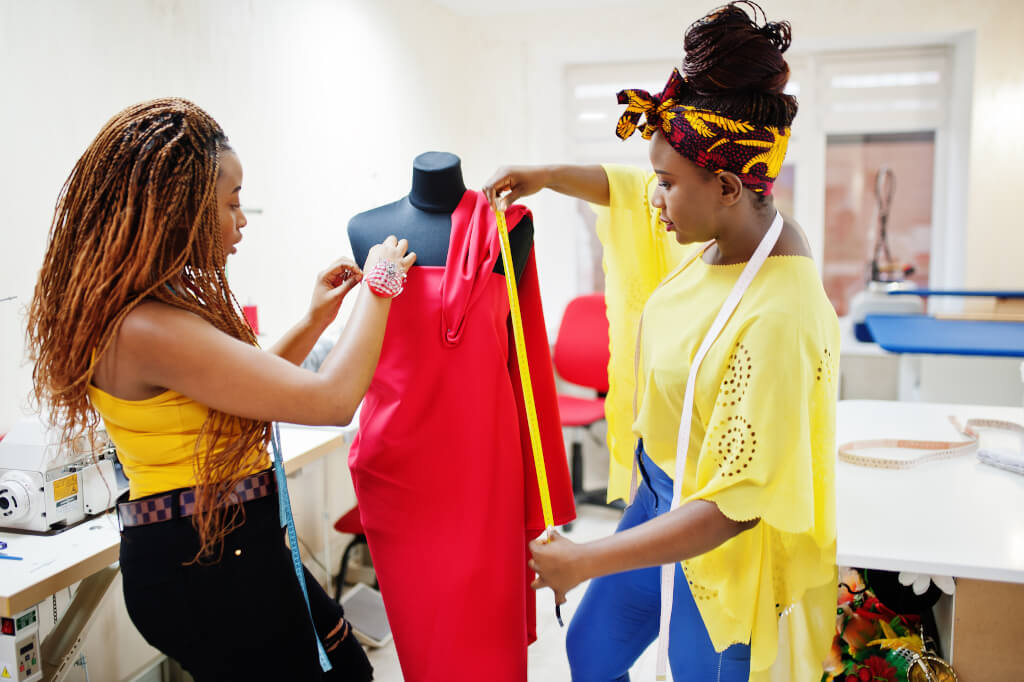The simple act of getting dressed might be taken for granted by many. But for millions of individuals with disabilities, this daily ritual can often become a daunting challenge, shedding light on the pressing need for inclusive design and adaptive clothing. Join us on an enlightening journey as we explore the transformative power of adaptive fashion—a realm where style seamlessly blends with functionality, and where misconceptions are debunked to pave the way for a more inclusive and compassionate fashion landscape.
Selecting an outfit may seem like a trivial decision, but for numerous people with disabilities, it is a monumental task that goes far beyond fashion choices. While most of us effortlessly zip up jackets and button shirts, the disabled community faces countless obstacles in their daily dressing routines. This segment of society often encounters inaccessible clothing designs, becoming one of the most underserved consumer groups worldwide. Astonishingly, approximately 16% of the global population reports having a disability, and in the United States alone, one in four individuals falls into this category.
Adaptive clothing is a dynamic and rapidly growing industry that dedicates itself to enhancing the independence and comfort of individuals with disabilities, as well as the elderly. The primary objective of adaptive fashion is to craft garments that not only accommodate medical equipment but also prioritize fashion and ease of use. While the concept of adaptive clothing isn’t entirely novel, the surge in demand for these specialized garments signifies a shift towards a more inclusive and compassionate fashion landscape. Adaptive clothing allows people with disabilities to dress more independently while maintaining comfort and the ability to wear necessary medical equipment attractively and functionally. The idea is to make clothing fashionable, practical, and easy to alter to cater to diverse needs.
Benefits of Adaptive Clothing
“Adaptive clothing” is a relatively recent term in the fashion industry, but its impact on the lives of people with disabilities and physical limitations is profound. These specially designed garments aim to provide comfort, dignity, and accessibility to individuals facing various challenges. Let’s dive into the world of adaptive fashion and discover how it caters to a wide range of needs, including physical limitations, sensory sensitivities, and mobility concerns.
One of the remarkable aspects of adaptive clothing is the transformation it has brought to footwear. For individuals with disabilities, finding shoes that are easy to put on and take off can be a game-changer. Adaptive footwear can accommodate orthotic devices, custom orthotics, or prosthetics with ease. Collaborations between the disabled community and major brands like Nike have paved the way for comfortable and stylish options that require no fastenings. Delve into the realm of convenient closures for garments, simplifying the dressing experience for those with dexterity issues. Features like magnetic buttons and elastic waistbands make getting dressed a breeze, eliminating the frustration of dealing with conventional closures.
The world of adaptive clothing extends its reach to amputees and individuals with prosthetics, providing specialized garments that make wearing prosthetics more comfortable and extend their lifespan. These adaptive garments can include features such as customized sleeve lengths or access zippers, ensuring a comfortable and secure fit. We explore clothing tailored for individuals who spend most of their time seated, such as wheelchair users. These specially designed garments prioritize comfort and mobility, with features like thigh pockets and loops that cater to the unique needs of this demographic.
The availability of adaptive underwear and sensory-friendly clothing is another remarkable aspect of the adaptive fashion landscape. These garments are designed to provide optimal comfort for individuals with sensory sensitivities. Discover brands like Target Kids that offer sensory-friendly options, including tagless designs and fabrics that are gentle on the skin. The integration of adaptive clothing with essential medical devices, such as feeding tubes, is a game-changer for many individuals. Brands like Unhidden have made it a priority to ensure that their clothing features discreet openings that accommodate various medical equipment needs. This innovative approach allows individuals to maintain their medical routines while wearing stylish and functional clothing.
Compression clothing has gained popularity for its potential benefits in improving circulation and joint stability. In the adaptive fashion world, brands like Spio offer customized compression clothing tailored to specific requirements. These garments can enhance alignment and self-awareness, providing valuable support to individuals with various physical needs.
Dispelling Myths Surrounding Adaptive Clothing
While adaptive clothing unquestionably promotes diversity by enabling individuals with varying degrees of physical ability to dress with self-assurance and comfort, it’s essential to dispel common myths and misconceptions surrounding this burgeoning field:
- Disabled People Do Not Care About Their Appearance
- Many people wrongly assume that businesses do not see a need to design fashionable clothing for individuals with disabilities. In reality, those with special needs might genuinely benefit from the confidence boost and sense of well-being that comes from creatively designed apparel.
- Disabled People Do Not Have the Means or Desire for Fashion
- It’s a misconception that individuals with disabilities may either lack the means or the desire to invest in high-end designer clothing. In truth, millions of people with disabilities, particularly in the United States, have unmet clothing needs. Any company can benefit from reaching out to this often-overlooked adaptive apparel sector.
- Adaptive Clothing Is Generic and Lacks Style
- There’s a false assumption that individuals with disabilities may have trouble finding clothes that suit their tastes. This can lead to a lack of accessible options. The reality is that adaptive apparel is custom-made for each individual, guaranteeing comfort and accommodating a wide range of needs.
The emergence of inclusive fashion brands plays a pivotal role in transforming the adaptive clothing landscape. To ensure genuine inclusivity, these brands prioritize involving individuals with disabilities in every part of the product development process, from ideation to marketing. By doing so, they create adaptive clothing that not only meets functional requirements but also celebrates style and self-expression.
Here are practical tips to help you introduce adaptive clothing seamlessly into your wardrobe:
- Begin by assessing your specific needs and preferences. Consider any physical challenges or requirements you have. Identifying your priorities will guide you in selecting the right adaptive clothing pieces for your lifestyle.
- Explore the vast array of adaptive clothing brands and collections available. From well-known labels to specialized adaptive designers, there’s a wide selection to choose from. Research their offerings and find brands that align with your style.
- If you have specific mobility or dressing challenges, consulting with an occupational therapist can be immensely helpful. They can provide valuable insights and recommendations tailored to your requirements.
- Begin your adaptive clothing journey with staple pieces that can easily blend into your existing wardrobe. Adaptive clothing includes items like magnetic closures, elastic waistbands, and seamless designs that offer both style and functionality.
- Accessorizing can elevate any outfit. Look for adaptive accessories that complement your clothing choices. Consider adaptive belts, easy-to-fast scarves, and comfortable yet chic shoes designed for ease of wear.
- Adaptive clothing doesn’t mean sacrificing your style. Mix and match adaptive pieces with your regular clothing to create outfits that reflect your taste. Pair adaptive pants with your favorite tops or integrate adaptive accessories seamlessly.
- When selecting adaptive clothing, prioritize comfort and functionality. Look for features like soft fabrics, adjustable closures, and sensory-friendly materials to ensure your clothing enhances your daily comfort.
- Don’t hesitate to seek feedback and recommendations from others who have embraced adaptive clothing. Online communities and forums can be valuable sources of advice and insights into adaptive fashion.
- Consider tailoring your adaptive wardrobe to your changing needs. As your requirements evolve, you can adapt your clothing choices accordingly. Consult with adaptive clothing experts or seamstresses for custom alterations.
- Above all, remember that confidence is key. Embracing adaptive clothing is not just about the clothes you wear; it’s about feeling empowered and comfortable in your skin. Wear your adaptive clothing with pride, knowing that it’s a celebration of your individuality and style.
Imagine a society where fashion truly knows no bounds—a world where everyone, regardless of physical abilities, can confidently wear trendy clothes that reflect their unique style and personality. Adaptive clothing isn’t merely a fashion trend; it’s a movement that promotes inclusivity, accessibility, and dignity for individuals with disabilities. As the industry continues to evolve and embrace diversity, we’re moving closer to making this vision a reality.




